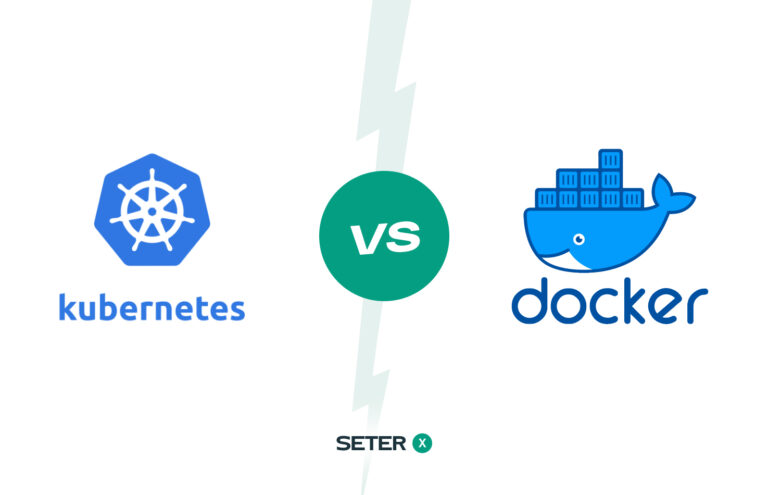
Get ready for an exhilarating deep dive into the world of technology and innovation! In this article, we’ll explore the most exciting highlights from KubeCon EU 2023, Angular 16, React 18, AWS’s groundbreaking EC2 instances, and AI Coding Companion. We’ll also touch on the incredible advancements in DevOps, Azure CNI Overlay, Amazon GameLift, Rekognition, and the remarkable projects from SEI. So, buckle up and embark on this journey through the latest and greatest in cloud-native development, cutting-edge frameworks, AI innovations, and software engineering breakthroughs!
KubeCon EU 2023 Highlights
Get ready for KubeCon EU 2023 with a preview of the hottest topics, including edge computing, developer experience, and Kubernetes cost management. Also it’s many co-located events, my favorite here is:
- IstioDay
- ArgoCon
- ObservabilityDay
KubeCon features several valuable sessions, covering a wide range of topics related to cloud-native development and Kubernetes. Key sessions include:
- “Choose Your Own Adventure: The Treacherous Trek to Development” – an interactive session on guiding source code to production, avoiding pitfalls and dead ends.
- “Kubernetes, Resistance Is Futile” – a talk on ING’s migration of its machine learning platform to Kubernetes, discussing challenges and outcomes.
- “Continuous Profiling Your Production Kubernetes Deployments Running at Scale” – insights into the benefits and promise of continuous profiling, featuring real-life examples from eBay.
- “Build Your Own Path in the Cloud Native Ecosystem” – lessons from industry leaders on navigating the cloud-native ecosystem and advice for cloud users and contributors.
- “Tutorial: Measure Twice, Cut Once” – a workshop on cloud-native networking, covering network protocols, traffic flow, DNS, and service mesh.
- “Tales from on-Call: Fun with Operating etcd at Scale” – insights into the challenges and solutions of operating etcd, the backbone of Kubernetes clusters, from Amazon’s EKS etcd team.
DevOps Benchmarking Study: The Impact of Internal Developer Platforms
Platform engineering and the rise of Internal Developer Platforms (IDPs) have become essential components of today’s DevOps culture. They address the core promise of DevOps: “you build it, you run it,” resulting in improved developer experience and increased productivity.
Key findings from the DevOps Benchmarking Study 2023:
- Top performing teams have built and maintain IDPs with dedicated platform teams
- These teams leverage a mix of open source and vendor software, treating their platform as a product
- Improved developer experience and productivity are hallmarks of top-performing organizations
- Dynamic Configuration Management sets top performers apart from low performers, enabling standardized and efficient app and infrastructure management
Benefits of Internal Developer Platforms:
- Improved developer experience through reduced cognitive load and self-service capabilities
- Accelerated innovation and shortened time to market for new products and services
- Minimized security risks and optimized cloud costs
Key recommendations for implementing Internal Developer Platforms:
- Start building your platform now: Begin developing an IDP to standardize and streamline your existing DevOps setup.
- Align platform team’s mission with company goals: Focus on objectives like accelerating innovation cycles, reducing time to market, controlling cloud costs, or mitigating security risks.
- Use a mix of open source and proprietary tools: Top performing teams combine various tools and treat their platform as a product.
- Support Dynamic Configuration Management: Implement a Platform Orchestrator to avoid static platforms, which can lead to bottlenecks, config drift, and infrastructure sprawl.
Angular 16: Exciting New Features and Improvements
Angular 16 introduces a range of new features and enhancements that address longstanding requests from the community and help bring Angular in line with other modern frameworks. Key updates include the removal of ngcc, binding router information to component inputs, the introduction of DestroyRef and takeUntilDestroyed, support for required inputs, Esbuild dev server, the innovative Signals feature, and SSR with hydration. These improvements make Angular more efficient, performant, and user-friendly.
To learn more about Angular 16 and explore the full documentation, visit the official Angular website: Angular Documentation.
React 18
React 18 is a major update to the popular JavaScript library that introduces powerful new features and improvements. Some key highlights of React 18 include:
- Concurrent Rendering: A behind-the-scenes mechanism that allows React to prepare multiple versions of your UI simultaneously. This feature is the foundation for many new capabilities in React 18.
- Automatic Batching: React now groups multiple state updates into a single re-render for better performance, even for updates outside of React event handlers.
- New APIs: React 18 introduces new APIs like startTransition, which allows developers to distinguish between urgent and non-urgent updates, ensuring a fluid user experience.
- Streaming Server-Side Rendering with Suspense: This enables better performance and improved user experiences for server-rendered React applications.
- Gradual Adoption: React 18 provides a smooth upgrade path with the ability to gradually adopt concurrent features at your own pace.
React 18 also brings improvements for React Native users, with the new React Native Architecture being shipped in a future release. While Server Components is still in development, it is expected to be released in a future minor 18.x update. Overall, React 18 aims to make it easier for developers to build great user experiences with enhanced performance and new capabilities.
AWS Introduces New EC2 Instances and AI Coding Companion
AWS announced the general availability of Amazon EC2 Trn1n and Inf2 instances. Trn1n instances, powered by AWS Trainium accelerators, double the network bandwidth for training network-intensive generative AI models. Inf2 instances, powered by AWS Inferentia2 accelerators, deliver higher performance at a lower cost for generative AI models. Read more about Trn1 instances and Inf2 instances.
Amazon CodeWhisperer, an AI coding companion, is now generally available with a free individual tier and a professional tier priced at $19 per user per month. Learn more from Steve Roberts blog post.
Amazon GameLift and Rekognition Launch New Features
Amazon GameLift adds support for Unreal Engine 5, enabling integration with Amazon GameLift service and faster testing and iteration of Unreal game builds. Check out the release notes.
Amazon Rekognition launches Face Liveness to deter fraud in facial verification by analyzing short selfie videos for spoof detection. Discover how to integrate Face Liveness in this AWS Machine Learning Blog post.
Azure CNI Overlay: Improved Networking Solution for AKS
Azure introduces Azure CNI Overlay, a new networking solution for Azure Kubernetes Service (AKS) to address performance, scale, and IP exhaustion challenges in large-scale clusters. Azure CNI Overlay assigns IP addresses from the user-defined overlay address space, allowing for improved performance and support for millions of pods across thousands of nodes. Read more in the Azure blog post.
SEI 2022 Year in Review Highlights Key Projects
The Software Engineering Institute (SEI) published the 2022 SEI Year in Review, detailing the institute’s notable projects in software engineering, cybersecurity, and AI for national defense and security. Read the 2022 SEI Year in Review to learn about their work in machine learning, responsible AI, zero trust implementation, automated threat hunting, and more.

